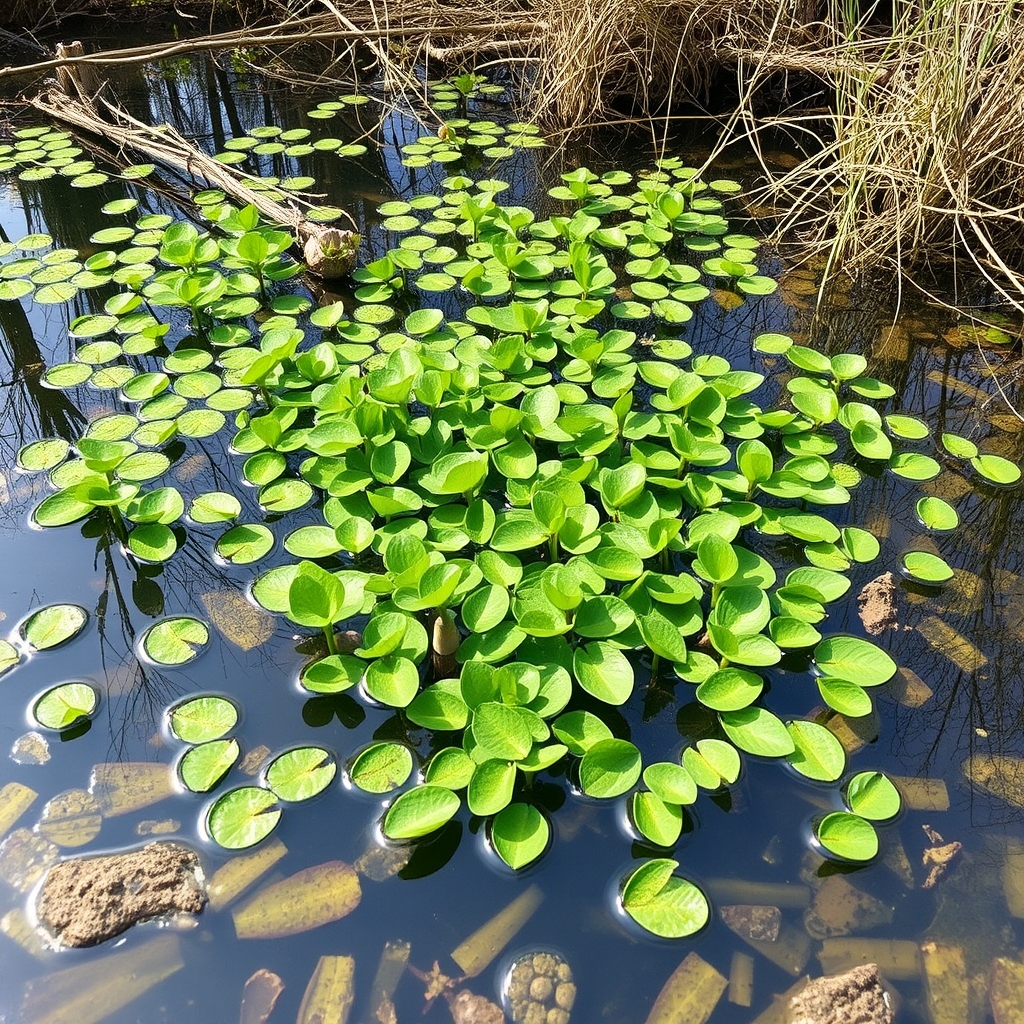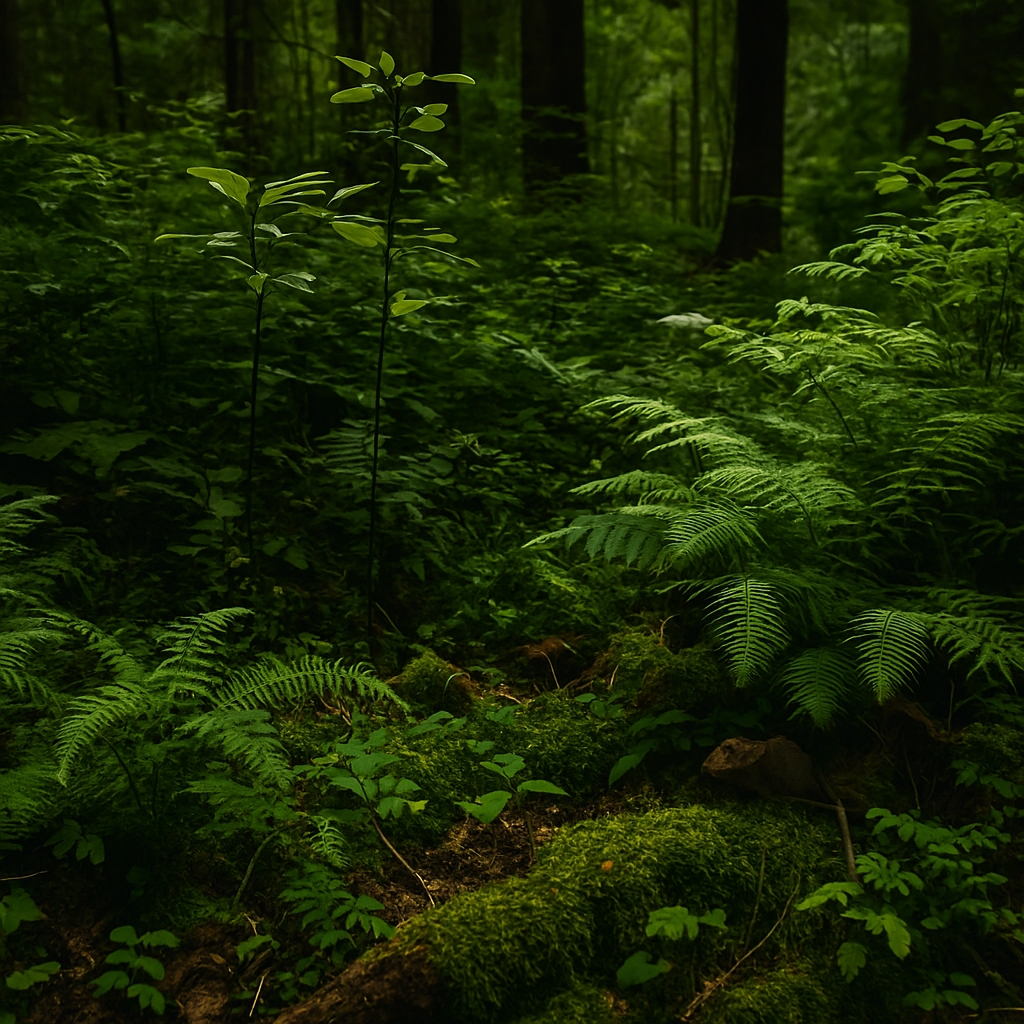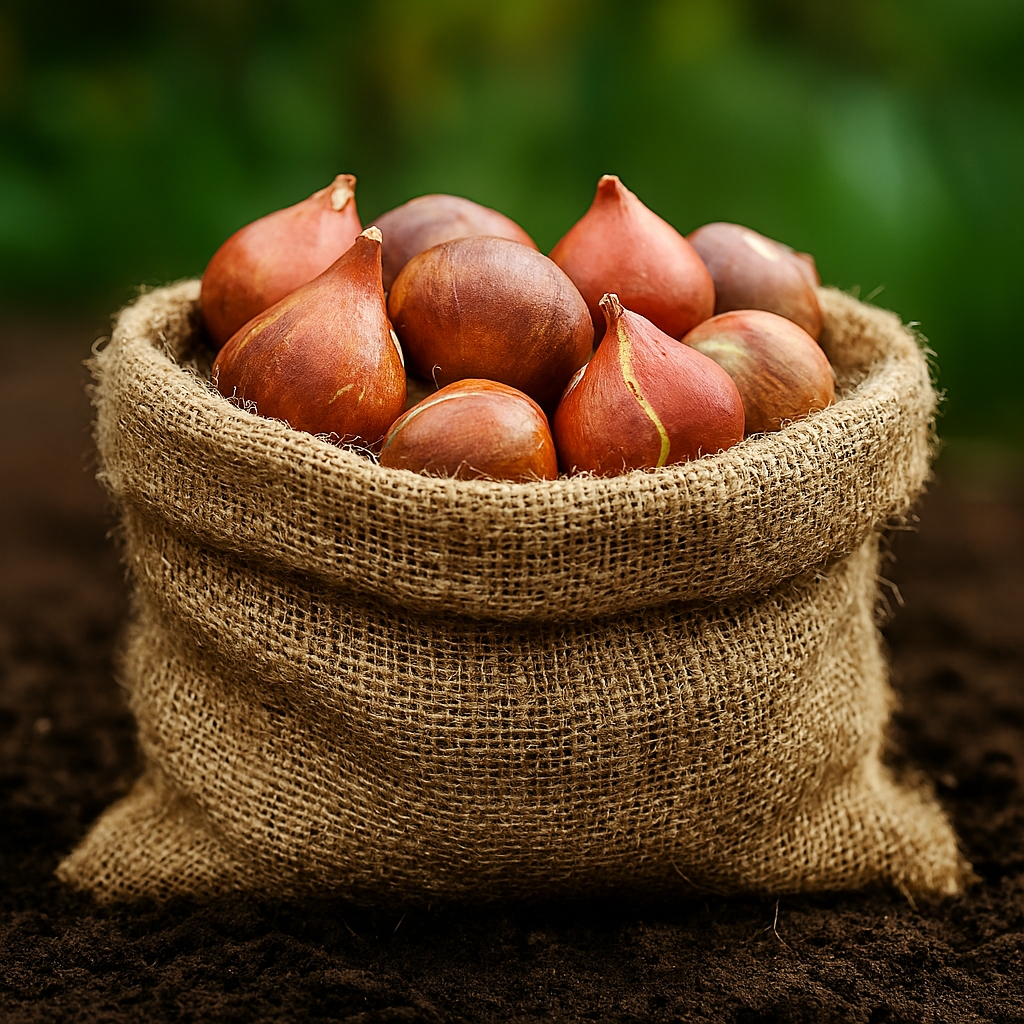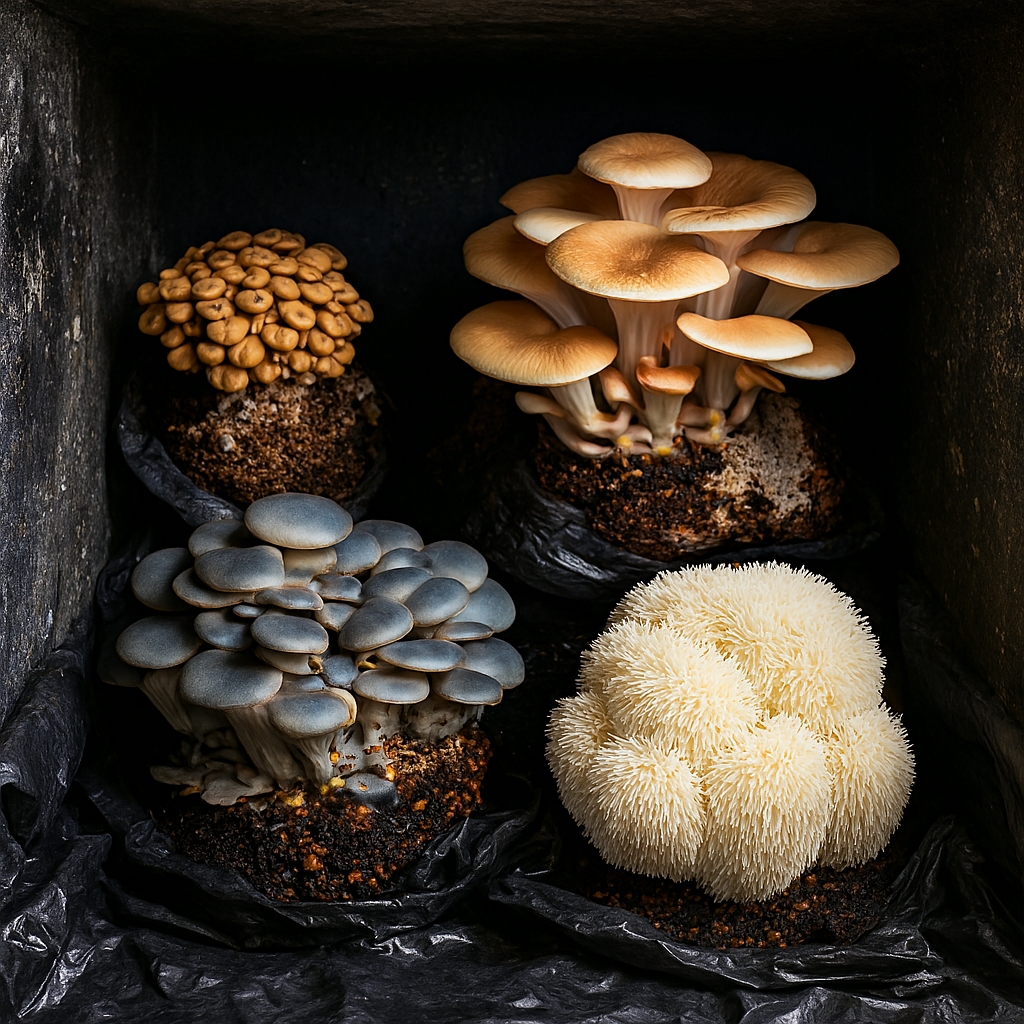The Ecological Power of Water Plants
Aquatic Plant Vegetation – Living Infrastructure Beneath the Surface
Aquatic plants are not passive decorations. They are active agents in the health and stability of freshwater ecosystems. These plants regulate temperature, filter pollutants, and reduce evaporation. Floating species like water lilies and duckweed shade the surface, lowering thermal stress. Submerged plants oxygenate the water and stabilize sediments. Emergent vegetation buffers shorelines and prevents erosion. Together, these plants form a living infrastructure that supports biodiversity and hydrological resilience.
Their presence reduces the risk of algal blooms and nutrient overload. Aquatic vegetation also slows water movement, allowing suspended particles to settle. This improves clarity and reduces turbidity. In drought-prone regions, aquatic plants help retain moisture and extend water availability. They are not just biological features — they are ecological tools.
Cooling, Filtering, and Protecting Our Waterways
Surface Shading – Temperature Regulation Through Floating Plants
Floating plants reduce solar penetration by shading the water’s surface. This lowers ambient water temperature and prevents thermal stratification. Species like water lettuce, duckweed, and water hyacinth are particularly effective. Their leaves intercept sunlight, creating microclimates beneath. Cooler water supports oxygen retention and reduces evaporation. Shading also limits the growth of heat-loving algae. In shallow systems, floating plants can reduce surface temperatures by several degrees.
This thermal buffering protects aquatic fauna from heat stress. Floating vegetation also slows photosynthesis in submerged algae, reducing oxygen fluctuations. The shading effect varies with plant density and leaf size. Seasonal changes influence coverage and cooling capacity. Floating plants are most effective in still or slow-moving waters. Their role in temperature regulation is often underappreciated. Surface shading is a passive but powerful climate control mechanism. Floating plants are natural insulators.
Cooling Effects of Floating Vegetation
| Plant Type | Shading Capacity | Temperature Reduction |
|---|---|---|
| Duckweed | High coverage, small leaves | 2–4°C reduction in surface temperature |
| Water Lettuce | Broad leaves, dense mats | 3–5°C reduction in shallow ponds |
| Water Hyacinth | Thick canopy, rapid growth | 4–6°C reduction in tropical systems |
| Lotus | Seasonal coverage, large leaves | 2–3°C reduction in temperate zones |
| Salvinia | Floating fern, compact structure | 1–2°C reduction in small reservoirs |
Sediment Stabilization – Anchoring the Substrate
Submerged aquatic plants play a critical role in stabilizing sediments. Their root systems bind soil particles, preventing erosion and resuspension. This anchoring effect reduces turbidity and improves water clarity. Stabilized sediments also retain nutrients, preventing downstream pollution. In flowing systems, rooted vegetation slows current velocity near the bottom. This creates microhabitats for invertebrates and fish. Sediment stabilization supports benthic biodiversity and reduces habitat loss.
Plants like eelgrass and pondweed are especially effective in soft substrates. Their presence reduces the need for artificial bank reinforcement. Stabilized sediments also reduce the risk of contaminant release from legacy deposits. Aquatic plants act as biological barriers against disturbance. Their roots form dense mats that resist scouring during storms. Sediment stability enhances overall ecosystem resilience. Without vegetation, sediments become mobile and disruptive. Aquatic plants are natural engineers of the substrate.
Sediment Stabilization by Aquatic Plants
| Plant Type | Root Structure | Stabilization Effect |
|---|---|---|
| Eelgrass | Fibrous, horizontal rhizomes | High resistance to current and wave action |
| Pondweed | Dense root mats | Effective in soft, silty substrates |
| Hornwort | Free-floating but settles debris | Indirect stabilization through biomass |
| Vallisneria | Ribbon-like leaves and anchored roots | Reduces sediment resuspension |
| Milfoil | Feathery foliage and deep roots | Stabilizes shallow lake beds |
Oxygenation – Enhancing Aquatic Respiration
Aquatic plants contribute to oxygenation through photosynthesis. During daylight hours, they release oxygen into the water column. This supports fish, invertebrates, and aerobic microbes. Submerged species are particularly important in low-flow systems. Oxygenation prevents hypoxia and supports metabolic processes. Plants also increase surface area for gas exchange. Their leaves and stems host periphyton, which further contributes to oxygen dynamics.
Oxygen levels fluctuate with light, temperature, and plant density. Dense vegetation can cause nighttime oxygen depletion, requiring balance. Oxygenation also influences nutrient cycling and decomposition rates. Healthy oxygen levels reduce the risk of fish kills and algal blooms. Aquatic plants act as biological ventilators. Their presence improves water quality and ecological function. Oxygenation is not just a chemical process — it is a life-support system. Aquatic vegetation sustains respiration across trophic levels.

Oxygen Contributions of Aquatic Plants
| Plant Type | Photosynthetic Rate | Oxygenation Benefit |
|---|---|---|
| Elodea | High photosynthesis in clear water | Strong oxygen release during daylight |
| Cabomba | Dense foliage and rapid growth | Sustains oxygen in warm conditions |
| Hydrilla | Efficient in low-light environments | Maintains oxygen in turbid systems |
| Hornwort | Free-floating and adaptable | Oxygenates surface and mid-depth zones |
| Tape Grass | Broad leaves and submerged growth | Stabilizes oxygen levels in ponds |
Nutrient Uptake – Filtering Excess Fertility
Aquatic plants absorb nutrients directly from water and sediment. They take up nitrogen, phosphorus, and trace minerals through roots and leaves. This reduces nutrient availability for algae and cyanobacteria. Nutrient uptake prevents eutrophication and improves water clarity. Plants act as biological filters, storing nutrients in biomass. Harvesting vegetation removes stored nutrients from the system. Submerged and emergent species differ in uptake pathways.
Emergent plants draw from sediment, while submerged species absorb from water. Nutrient uptake varies with growth rate, season, and species composition. Aquatic vegetation reduces the need for chemical treatments. It also supports microbial communities that transform nutrients. Nutrient removal is essential in agricultural and urban runoff zones. Aquatic plants are natural purifiers of excess fertility. Their role in nutrient cycling is foundational. Without vegetation, nutrients accumulate and destabilize ecosystems. Plants keep fertility in check.
Nutrient Uptake by Aquatic Vegetation
| Nutrient | Uptake Pathway | Plant Examples |
|---|---|---|
| Nitrogen | Water column and sediment absorption | Cattails, duckweed, hydrilla |
| Phosphorus | Root uptake from sediment | Water lilies, bulrush, pondweed |
| Potassium | General uptake via roots and leaves | Elodea, tape grass, hornwort |
| Calcium | Absorbed from water and sediment | Lotus, cabomba, eelgrass |
| Magnesium | Essential for chlorophyll synthesis | Vallisneria, milfoil, salvinia |
Evaporation Control – Moisture Retention Through Vegetation
Aquatic plants reduce evaporation by shading and insulating water surfaces. Floating species block direct sunlight, lowering surface temperature. Cooler water evaporates more slowly than warm water. Dense vegetation also reduces wind exposure, which accelerates evaporation. In arid regions, plant cover extends water availability. Evaporation control is critical during drought and heatwaves.
Vegetation acts as a moisture shield, preserving hydrological balance. Floating mats can reduce evaporation by up to 60% in small ponds. Emergent plants buffer shorelines and reduce edge loss. Submerged plants influence thermal gradients that affect evaporation rates. Evaporation control supports aquatic life and water storage. It also reduces the need for artificial replenishment. Aquatic plants are natural regulators of moisture loss. Their presence stabilizes water levels across seasons. Evaporation is not just a climate issue — it is a vegetation issue. Plants protect water from the sky.
Evaporation Reduction by Aquatic Plants
| Plant Type | Mechanism of Control | Evaporation Reduction |
|---|---|---|
| Duckweed | Surface shading and wind buffering | Up to 60% in small systems |
| Water Hyacinth | Dense canopy and rapid coverage | 40–50% in tropical reservoirs |
| Lotus | Large leaves and seasonal growth | 30–40% in temperate ponds |
| Cattails | Edge buffering and wind resistance | 20–30% along shorelines |
| Salvinia | Compact mats and surface insulation | 25–35% in shallow wetlands |
Microbial Support – Hosting Invisible Allies
Aquatic plants support microbial communities that drive ecosystem processes. Their surfaces host bacteria, fungi, and protozoa. These microbes decompose organic matter and transform nutrients. Root zones create anaerobic and aerobic microhabitats. Microbial activity enhances water purification and sediment stability. Plants and microbes form symbiotic relationships. Microbes help plants access nutrients and resist pathogens. Aquatic vegetation increases microbial diversity and abundance.
Microbial support varies with plant type and water chemistry. Submerged plants host more periphyton, while emergent plants support soil microbes. Microbial processes regulate nitrogen cycling and carbon transformation. Healthy microbial communities reduce disease risk and improve resilience. Aquatic plants are microbial scaffolds. Their presence amplifies invisible infrastructure. Microbial support is essential for ecological function. Plants host the unseen engines of water health.

Microbial Functions Supported by Aquatic Plants
| Microbial Group | Ecological Role | Plant Interaction |
|---|---|---|
| Bacteria | Nutrient cycling and decomposition | Root zone colonization and leaf surfaces |
| Fungi | Organic breakdown and symbiosis | Mycorrhizal-like associations in sediment |
| Protozoa | Predator control and nutrient flow | Surface biofilms and water column |
| Cyanobacteria | Nitrogen fixation and oxygen production | Coexistence with submerged foliage |
| Actinomycetes | Antibiotic production and soil structure | Found in emergent plant rhizospheres |
Biodiversity Enhancement – Habitat Creation and Species Support
Aquatic plants provide structural complexity that supports diverse life forms. Their leaves, stems, and roots offer shelter, breeding grounds, and feeding surfaces. Fish use submerged vegetation for spawning and protection from predators. Amphibians lay eggs among floating mats and emergent stems. Invertebrates colonize plant surfaces, forming the base of aquatic food webs. Birds forage among reeds and nest in dense emergent stands. Plant diversity increases habitat heterogeneity, which supports species richness. Different plant types attract different faunal communities.
Biodiversity is highest in systems with a mix of submerged, floating, and emergent vegetation. Aquatic plants also support seasonal migrations and life cycle transitions. Their presence stabilizes trophic interactions and reduces population volatility. Biodiversity enhances ecosystem resilience and recovery after disturbance. Aquatic vegetation is not just habitat — it is ecological architecture. Without plants, aquatic systems become simplified and vulnerable. Vegetation builds life from the bottom up.
Species Supported by Aquatic Vegetation
| Faunal Group | Habitat Function Provided | Example Species |
|---|---|---|
| Fish | Spawning, shelter, and feeding | Perch, gudgeon, rainbowfish |
| Amphibians | Egg-laying and moisture retention | Frogs, newts, salamanders |
| Invertebrates | Substrate for colonization and feeding | Mayflies, snails, dragonfly larvae |
| Birds | Nesting and foraging zones | Reed warbler, heron, moorhen |
| Reptiles | Basking and ambush cover | Turtles, water dragons |
Algal Suppression – Competing for Light and Nutrients
Aquatic plants suppress algae by outcompeting them for light and nutrients. Floating plants shade the surface, reducing photosynthetically active radiation. Submerged plants absorb dissolved nutrients before algae can proliferate. This limits the growth of phytoplankton and filamentous algae. Dense vegetation also reduces water column mixing, which restricts algal access to nutrients. Some aquatic plants release allelopathic compounds that inhibit algal growth. These natural chemicals disrupt algal metabolism and reproduction. Algal suppression improves water clarity and reduces oxygen fluctuations.
It also prevents harmful algal blooms that produce toxins. Aquatic plants act as ecological regulators of primary productivity. Their presence creates a balanced light and nutrient environment. Algal suppression is most effective in systems with high plant diversity. Vegetation density and distribution influence suppression strength. Aquatic plants are not passive filters — they are active competitors. Their role in algal control is essential for water quality.
Mechanisms of Algal Suppression by Aquatic Plants
| Suppression Strategy | Description | Example Plant Species |
|---|---|---|
| Light Competition | Surface shading reduces algal photosynthesis | Duckweed, lotus, water hyacinth |
| Nutrient Uptake | Absorbs nitrogen and phosphorus | Elodea, hornwort, pondweed |
| Allelopathy | Releases inhibitory compounds | Myriophyllum, Ceratophyllum, Hydrilla |
| Flow Reduction | Slows mixing and nutrient resuspension | Vallisneria, eelgrass |
| Habitat Structuring | Supports grazers that consume algae | All submerged vegetation |
Shoreline Protection – Buffering Erosion and Wave Energy
Emergent aquatic plants protect shorelines from erosion. Their stems and roots absorb wave energy and stabilize soil. Vegetation reduces the impact of boat wakes, wind-driven waves, and seasonal floods. Root systems bind sediment and prevent undercutting. Dense plant zones act as living breakwaters. Shoreline vegetation also filters runoff before it enters the water. This reduces sedimentation and nutrient loading.
Plants like bulrush, sedge, and reed are especially effective. Shoreline protection preserves habitat for amphibians, birds, and invertebrates. It also maintains access for recreation and aesthetic value. Vegetated banks are more resilient to climate extremes. They recover faster after disturbance and require less maintenance. Shoreline protection is a form of green infrastructure. Aquatic plants defend the edge where land meets water. Their presence is both functional and restorative.

Shoreline Stabilization by Emergent Plants
| Plant Type | Erosion Control Mechanism | Ideal Habitat |
|---|---|---|
| Bulrush (Schoenoplectus) | Dense stems and rhizomes | Lakeshores, wetlands |
| Common Reed (Phragmites) | Tall, fibrous root systems | Estuaries, riverbanks |
| Sedge (Carex spp.) | Clumping growth and sediment trapping | Marshes, floodplains |
| Cattail (Typha spp.) | Vertical stems and thick mats | Ponds, shallow lakes |
| Spike Rush (Eleocharis) | Fine roots and flexible stems | Seasonal wetlands, drainage zones |
Drought Buffering – Extending Water Retention
Aquatic plants help buffer against drought by retaining moisture in the system. Their presence reduces evaporation and increases water-holding capacity. Rooted vegetation slows water loss through transpiration regulation. Floating plants insulate the surface and reduce thermal evaporation. Emergent plants shade the soil and reduce desiccation. Vegetation also traps rainwater and runoff, increasing infiltration. In dry periods, plant biomass stores water internally. Some species enter dormancy, preserving structure until conditions improve. Aquatic plants extend hydroperiods in seasonal wetlands.
They maintain microhabitats for aquatic life during drought. Vegetation buffers temperature extremes, reducing stress on remaining water. Drought buffering supports ecological continuity and recovery. Aquatic plants act as hydrological stabilizers. Their presence delays system collapse during water scarcity. Vegetation is a living reservoir.
Drought Resilience Functions of Aquatic Plants
| Function | Description | Supporting Plant Types |
|---|---|---|
| Evaporation Reduction | Surface shading and wind buffering | Duckweed, lotus, salvinia |
| Moisture Retention | Biomass stores water internally | Cattail, sedge, water hyacinth |
| Soil Shading | Reduces ground evaporation | Reeds, bulrush, spike rush |
| Dormancy Adaptation | Survives dry periods and regrows | Vallisneria, hornwort, smartweed |
| Infiltration Support | Slows runoff and increases absorption | Mixed emergent vegetation |
Pollutant Filtration – Removing Contaminants Naturally
Aquatic plants filter pollutants from water through physical, chemical, and biological processes. They trap suspended solids and absorb dissolved contaminants. Roots and leaves take up heavy metals, excess nutrients, and organic compounds. Microbial communities on plant surfaces break down toxins. Vegetation slows water flow, increasing contact time for filtration. Plants like cattails and reeds are used in constructed wetlands for wastewater treatment.
Pollutant uptake varies with species, pollutant type, and environmental conditions. Aquatic plants reduce concentrations of nitrogen, phosphorus, lead, and hydrocarbons. Filtration improves water clarity, reduces toxicity, and supports aquatic life. Vegetation also prevents re-suspension of contaminated sediments. Pollutant removal is enhanced by plant diversity and density. Harvesting biomass can remove stored pollutants from the system. Aquatic plants are natural water purifiers. Their role in filtration is scalable and sustainable. Vegetation turns pollution into productivity.
Pollutants Removed by Aquatic Vegetation
| Pollutant Type | Removal Mechanism | Effective Plant Species |
|---|---|---|
| Nitrogen (N) | Uptake and microbial transformation | Cattail, duckweed, hornwort |
| Phosphorus (P) | Root absorption and sediment binding | Reed, pondweed, water hyacinth |
| Heavy Metals (Pb, Cd) | Bioaccumulation in roots and leaves | Sedge, bulrush, lotus |
| Hydrocarbons | Microbial degradation on plant surfaces | Mixed emergent vegetation |
| Suspended Solids | Physical trapping and sedimentation | Dense submerged and emergent plants |
Seasonal Adaptation – Responding to Climate Rhythms
Aquatic plants adapt to seasonal changes in temperature, light, and water levels. Some species grow rapidly in spring and summer, then enter dormancy in autumn. Others persist year-round, maintaining ecological functions through cold or dry periods. Seasonal adaptation ensures continuity of habitat and water quality. Floating plants adjust coverage based on light intensity and nutrient availability. Submerged species alter photosynthetic rates with temperature shifts. Emergent plants shed leaves or reduce transpiration during drought. These adaptations stabilize ecosystem processes across seasons.
Seasonal growth cycles also influence nutrient uptake and oxygenation. Aquatic vegetation buffers against seasonal extremes, including heatwaves and floods. Plant diversity enhances seasonal resilience by distributing functions. Adaptation is not passive — it is strategic. Aquatic plants respond to environmental cues with physiological changes. Their seasonal rhythms synchronize with hydrological cycles. Vegetation is a living calendar of ecological timing. Seasonal adaptation sustains system integrity.
Seasonal Behaviors of Aquatic Plants
| Season | Plant Response | Ecological Benefit |
|---|---|---|
| Spring | Rapid growth and reproduction | Habitat expansion and nutrient uptake |
| Summer | Peak photosynthesis and shading | Oxygenation and evaporation control |
| Autumn | Biomass reduction and dormancy onset | Nutrient release and sediment stability |
| Winter | Dormancy or slow metabolism | Moisture retention and erosion buffering |
| Dry Season | Reduced transpiration and root activity | Drought resilience and water conservation |
Hydrological Balance – Regulating Flow and Storage
Aquatic plants help regulate hydrological balance in freshwater systems. Their presence slows water movement, reducing erosion and sediment transport. Vegetation increases infiltration and groundwater recharge. Root systems retain moisture and stabilize water levels. Floating plants reduce surface evaporation, preserving volume. Emergent plants buffer flood pulses and absorb excess runoff.
Submerged species influence flow velocity and nutrient dispersion. Hydrological balance supports biodiversity and water quality. Aquatic vegetation distributes water across space and time. It prevents rapid fluctuations that destabilize ecosystems. Vegetation also enhances retention in constructed wetlands and reservoirs. Hydrological regulation is a key function of aquatic plants. Their role extends beyond aesthetics to system control. Plants are natural moderators of water dynamics. Hydrological balance depends on biological infrastructure. Aquatic vegetation is a living regulator of flow.
Hydrological Functions of Aquatic Plants
| Function | Description | Supporting Plant Types |
|---|---|---|
| Flow Regulation | Slows water movement and disperses energy | Submerged plants like eelgrass, pondweed |
| Moisture Retention | Stores water in biomass and root zones | Cattails, sedges, lotus |
| Flood Buffering | Absorbs excess runoff and reduces peaks | Reeds, bulrush, spike rush |
| Groundwater Recharge | Enhances infiltration through root systems | Mixed emergent vegetation |
| Evaporation Control | Reduces surface loss through shading | Duckweed, salvinia, water hyacinth |
Root Zone Dynamics – Subsurface Engineering
Aquatic plant roots shape subsurface conditions. They oxygenate sediment, stabilize soil, and support microbial communities. Root zones create gradients of moisture, nutrients, and gas exchange. These zones influence decomposition and nutrient cycling. Deep-rooted species anchor sediment and prevent erosion. Shallow roots trap organic matter and support detritivores. Root exudates alter chemical composition and microbial activity. Aquatic plants engineer the substrate from below. Their root systems vary in depth, density, and function. Root zones also influence plant competition and spatial distribution.
Subsurface dynamics affect water clarity and contaminant mobility. Aquatic vegetation builds structure beneath the surface. Root zones are ecological infrastructure. They support life above and below the waterline. Subsurface engineering is a silent but essential function. Aquatic plants shape the ground they grow in.
Root Zone Functions in Aquatic Systems
| Root Function | Description | Example Plant Species |
|---|---|---|
| Sediment Stabilization | Anchors soil and prevents resuspension | Vallisneria, pondweed, eelgrass |
| Oxygenation | Releases oxygen into anaerobic sediment | Elodea, hornwort, tape grass |
| Nutrient Cycling | Supports microbial transformation | Cattail, bulrush, lotus |
| Organic Trapping | Captures detritus and supports decomposers | Sedge, spike rush, smartweed |
| Chemical Alteration | Root exudates modify sediment chemistry | Water hyacinth, cabomba, hydrilla |
Carbon Sequestration – Capturing Atmospheric CO₂
Aquatic plants sequester carbon through photosynthesis and biomass accumulation. They absorb atmospheric CO₂ and store it in leaves, stems, and roots. Submerged species also capture dissolved carbon from the water column. Carbon is stored in living tissue and sediment deposits. Some aquatic systems act as long-term carbon sinks. Peat-forming wetlands are especially effective at carbon retention.
Floating plants contribute to short-term sequestration through rapid growth. Emergent vegetation stores carbon in fibrous roots and rhizomes. Carbon sequestration reduces greenhouse gas concentrations. It also supports soil formation and nutrient retention. Aquatic plants are part of the global carbon cycle. Their role is often overlooked in climate models. Vegetation turns carbon into structure and stability. Sequestration is a silent climate service. Aquatic plants help cool the planet from below.
Carbon Sequestration by Aquatic Vegetation
| Plant Type | Carbon Storage Mechanism | Sequestration Potential |
|---|---|---|
| Submerged Plants | Biomass and sediment burial | Moderate, seasonal |
| Floating Plants | Rapid growth and turnover | Short-term, high turnover |
| Emergent Plants | Root biomass and peat formation | Long-term, high retention |
| Peat-Forming Species | Accumulate organic matter in wetlands | Very high, centuries of storage |
| Mixed Vegetation | Combined biomass and sediment interaction | Balanced and scalable |
Thermal Buffering – Stabilizing Temperature Extremes
Aquatic plants buffer temperature fluctuations in water bodies. Floating vegetation shades the surface, reducing solar heating. Submerged plants influence thermal stratification and mixing. Emergent plants insulate shorelines and reduce edge warming. Vegetation creates microclimates that support sensitive species. Thermal buffering protects aquatic life from heat stress. It also reduces evaporation and oxygen loss. Plants moderate daily and seasonal temperature swings. Dense vegetation lowers peak temperatures during heatwaves. Thermal stability supports metabolic processes and reproduction. Aquatic plants act as biological insulators. Their presence improves resilience to climate variability. Thermal buffering is a passive but powerful function. Vegetation cools water without energy input. Aquatic plants regulate heat through structure and placement.
Temperature Regulation by Aquatic Plants
| Buffering Mechanism | Description | Effective Plant Types |
|---|---|---|
| Surface Shading | Blocks sunlight and reduces heating | Duckweed, lotus, water lettuce |
| Submerged Mixing | Alters stratification and flow | Elodea, hornwort, hydrilla |
| Shoreline Insulation | Reduces edge warming and soil heat transfer | Reeds, bulrush, cattails |
| Microclimate Creation | Supports cooler zones for fauna | Mixed vegetation clusters |
| Seasonal Modulation | Adjusts coverage with temperature | Salvinia, cabomba, pondweed |
Light Filtration – Regulating Photosynthetic Access
Aquatic plants regulate light penetration through water columns. Floating species block direct sunlight, reducing the intensity of photosynthetically active radiation. This limits algal overgrowth and protects light-sensitive organisms. Submerged plants absorb and scatter light, creating gradients of illumination. These gradients support diverse photosynthetic niches. Light filtration also reduces thermal stress in shallow systems. Plants act as biological filters for solar energy.
Their presence prevents photoinhibition in sensitive species. Light regulation supports balanced primary productivity. It also protects benthic habitats from UV degradation. Filtration varies with plant density, leaf structure, and water clarity. Seasonal changes in plant coverage influence light dynamics. Aquatic vegetation creates a layered light environment. This complexity supports biodiversity and system stability. Light is not just energy — it is structure.
Light Regulation by Aquatic Plants
| Plant Type | Light Filtration Mechanism | Ecological Effect |
|---|---|---|
| Duckweed | Dense surface mats | Blocks excess light and cools water |
| Water Hyacinth | Broad leaves and rapid growth | Reduces light penetration and algal growth |
| Submerged Plants | Absorb and scatter light | Create depth gradients for photosynthesis |
| Lotus | Seasonal canopy coverage | Modulates light seasonally |
| Salvinia | Compact floating fern | Filters light in small water bodies |
Trophic Support – Feeding the Food Web
Aquatic plants are foundational to aquatic food webs. They produce organic matter through photosynthesis, fueling primary consumers. Herbivorous invertebrates graze on plant surfaces and periphyton. Fish feed on plant-associated invertebrates and detritus. Decomposing plant material supports microbial and fungal communities. These microbes are consumed by protozoa and filter feeders.
Aquatic vegetation increases food availability and diversity. It also supports detrital pathways that stabilize energy flow. Trophic support varies with plant type and growth stage. Young shoots offer high nutritional value, while older tissue supports decomposers. Plants also trap organic particles, concentrating food resources. Vegetation enhances trophic connectivity across habitat zones. It supports both grazing and detrital food chains. Aquatic plants are not just habitat — they are nourishment. Trophic support sustains life from microbes to fish.
Trophic Roles of Aquatic Vegetation
| Trophic Level | Supported By | Example Interactions |
|---|---|---|
| Primary Consumers | Leaf tissue and periphyton | Snails, mayflies, water beetles |
| Secondary Consumers | Invertebrates and small fish | Frogs, dragonflies, perch |
| Decomposers | Dead plant material | Bacteria, fungi, detritivores |
| Filter Feeders | Microbes and organic particles | Mussels, zooplankton |
| Top Predators | Prey sheltering in vegetation | Herons, turtles, large fish |
Flood Mitigation – Absorbing and Slowing Water
Aquatic plants reduce flood risk by absorbing and slowing water flow. Emergent vegetation acts as a buffer during high rainfall events. Root systems increase infiltration and reduce surface runoff. Dense plant zones trap sediment and debris, preventing downstream damage. Vegetation slows water velocity, reducing erosion and channel incision. Floodplains with aquatic plants retain water longer, delaying peak discharge. Plants also stabilize banks and reduce scouring.
Flood mitigation is enhanced by plant diversity and spatial distribution. Vegetation reduces the need for hard infrastructure like levees. It also supports natural floodplain function and recharge. Aquatic plants transform flood energy into ecological productivity. Their presence reduces flood intensity and duration. Flood mitigation is a key ecosystem service. Plants protect both ecosystems and human settlements. Vegetation is a living levee.
Flood Control Functions of Aquatic Plants
| Function | Description | Supporting Plant Types |
|---|---|---|
| Flow Reduction | Slows water and disperses energy | Reeds, bulrush, sedges |
| Infiltration Increase | Enhances soil absorption | Cattails, spike rush, smartweed |
| Sediment Trapping | Captures debris and reduces turbidity | Mixed emergent vegetation |
| Bank Stabilization | Prevents erosion and collapse | Lotus, water willow, rushes |
| Peak Delay | Retains water in floodplain zones | Dense wetland vegetation |

Habitat Layering – Vertical and Horizontal Complexity
Aquatic plants create layered habitats across vertical and horizontal planes. Floating plants occupy the surface, providing shade and cover. Submerged species fill the water column with structure. Emergent plants rise above the surface, connecting water to air. This layering supports species with different spatial needs. Fish use vertical zones for feeding, spawning, and refuge. Invertebrates colonize stems, leaves, and root zones. Birds forage at the surface and nest in emergent stands.
Habitat layering increases ecological niches and reduces competition. It also buffers environmental fluctuations across depths. Layered vegetation supports complex food webs and life cycles. Horizontal variation adds patchiness and edge effects. This spatial diversity enhances resilience and recovery. Aquatic plants build three-dimensional ecosystems. Habitat layering is ecological architecture in motion.
Habitat Zones Created by Aquatic Plants
| Habitat Layer | Dominant Plant Type | Supported Species |
|---|---|---|
| Surface | Duckweed, lotus, water hyacinth | Frogs, turtles, surface-feeding fish |
| Mid-Water Column | Elodea, hornwort, hydrilla | Small fish, invertebrates, zooplankton |
| Substrate | Vallisneria, pondweed, eelgrass | Benthic invertebrates, detritivores |
| Emergent Zone | Cattails, reeds, bulrush | Birds, amphibians, insects |
| Shoreline Edge | Sedge, spike rush, smartweed | Crustaceans, reptiles, juvenile fish |
Ecological Memory – Retaining System Knowledge
Aquatic vegetation contributes to ecological memory. Root systems preserve soil structure and microbial communities. Seed banks store genetic diversity and adaptive potential. Perennial plants regrow after disturbance, restoring function. Vegetation patterns reflect past hydrology and disturbance regimes. Memory supports resilience and recovery after floods, droughts, or pollution. Aquatic plants encode environmental history in structure and composition. Their presence stabilizes ecological identity over time. Memory is stored in biomass, sediment, and spatial arrangement. It influences succession and species return. Systems with strong memory recover faster and more completely. Aquatic vegetation is a living archive of past conditions. Memory supports continuity in dynamic environments. It also informs restoration and management. Ecological memory is not abstract — it is rooted.
Components of Ecological Memory in Aquatic Systems
| Memory Element | Description | Ecological Function |
|---|---|---|
| Root Networks | Preserve soil and microbial structure | Supports regrowth and nutrient cycling |
| Seed Banks | Store species diversity and traits | Enables recovery after disturbance |
| Biomass Legacy | Retains nutrients and habitat structure | Stabilizes food webs and microclimates |
| Spatial Patterns | Reflect past hydrology and disturbance | Guide succession and recolonization |
| Microbial Communities | Maintain functional redundancy | Buffer against environmental shocks |
Restoration Potential – Rebuilding with Vegetation
Aquatic plants are central to ecological restoration. They stabilize sediments, filter pollutants, and rebuild food webs. Vegetation improves water quality and habitat complexity. Restoration projects use native plants to reestablish function. Species selection depends on hydrology, substrate, and climate. Planting density and spatial arrangement influence success.
Aquatic vegetation accelerates recovery after degradation. It also supports long-term resilience and self-maintenance. Restoration with plants is cost-effective and scalable. Vegetation integrates physical, chemical, and biological repair. Monitoring ensures adaptive management and feedback. Aquatic plants are tools for healing damaged systems. Their presence signals ecological renewal. Restoration is not just repair — it is reweaving. Plants are the threads of recovery.
Restoration Roles of Aquatic Vegetation
| Restoration Goal | Vegetation Function | Example Species |
|---|---|---|
| Sediment Stabilization | Anchors substrate and reduces erosion | Vallisneria, pondweed, eelgrass |
| Water Purification | Filters nutrients and contaminants | Cattail, bulrush, duckweed |
| Habitat Recovery | Rebuilds structure and trophic support | Hornwort, lotus, smartweed |
| Biodiversity Return | Attracts and supports native fauna | Mixed emergent and submerged plants |
| Climate Resilience | Buffers temperature and moisture extremes | Reeds, salvinia, water hyacinth |
Flood Mitigation – Absorbing and Slowing Water
Aquatic plants reduce flood risk by absorbing and slowing water flow. Emergent vegetation acts as a buffer during high rainfall events. Root systems increase infiltration and reduce surface runoff. Dense plant zones trap sediment and debris, preventing downstream damage. Vegetation slows water velocity, reducing erosion and channel incision. Floodplains with aquatic plants retain water longer, delaying peak discharge. Plants also stabilize banks and reduce scouring.
Flood mitigation is enhanced by plant diversity and spatial distribution. Vegetation reduces the need for hard infrastructure like levees. It also supports natural floodplain function and recharge. Aquatic plants transform flood energy into ecological productivity. Their presence reduces flood intensity and duration. Flood mitigation is a key ecosystem service. Plants protect both ecosystems and human settlements. Vegetation is a living levee.
Flood Control Functions of Aquatic Plants
| Function | Description | Supporting Plant Types |
|---|---|---|
| Flow Reduction | Slows water and disperses energy | Reeds, bulrush, sedges |
| Infiltration Increase | Enhances soil absorption | Cattails, spike rush, smartweed |
| Sediment Trapping | Captures debris and reduces turbidity | Mixed emergent vegetation |
| Bank Stabilization | Prevents erosion and collapse | Lotus, water willow, rushes |
| Peak Delay | Retains water in floodplain zones | Dense wetland vegetation |
Habitat Layering – Vertical and Horizontal Complexity
Aquatic plants create layered habitats across vertical and horizontal planes. Floating plants occupy the surface, providing shade and cover. Submerged species fill the water column with structure. Emergent plants rise above the surface, connecting water to air. This layering supports species with different spatial needs. Fish use vertical zones for feeding, spawning, and refuge. Invertebrates colonize stems, leaves, and root zones. Birds forage at the surface and nest in emergent stands.
Habitat layering increases ecological niches and reduces competition. It also buffers environmental fluctuations across depths. Layered vegetation supports complex food webs and life cycles. Horizontal variation adds patchiness and edge effects. This spatial diversity enhances resilience and recovery. Aquatic plants build three-dimensional ecosystems. Habitat layering is ecological architecture in motion.
Habitat Zones Created by Aquatic Plants
| Habitat Layer | Dominant Plant Type | Supported Species |
|---|---|---|
| Surface | Duckweed, lotus, water hyacinth | Frogs, turtles, surface-feeding fish |
| Mid-Water Column | Elodea, hornwort, hydrilla | Small fish, invertebrates, zooplankton |
| Substrate | Vallisneria, pondweed, eelgrass | Benthic invertebrates, detritivores |
| Emergent Zone | Cattails, reeds, bulrush | Birds, amphibians, insects |
| Shoreline Edge | Sedge, spike rush, smartweed | Crustaceans, reptiles, juvenile fish |
Ecological Memory – Retaining System Knowledge
Aquatic vegetation contributes to ecological memory. Root systems preserve soil structure and microbial communities. Seed banks store genetic diversity and adaptive potential. Perennial plants regrow after disturbance, restoring function. Vegetation patterns reflect past hydrology and disturbance regimes. Memory supports resilience and recovery after floods, droughts, or pollution. Aquatic plants encode environmental history in structure and composition. Their presence stabilizes ecological identity over time. Memory is stored in biomass, sediment, and spatial arrangement. It influences succession and species return. Systems with strong memory recover faster and more completely. Aquatic vegetation is a living archive of past conditions. Memory supports continuity in dynamic environments. It also informs restoration and management. Ecological memory is not abstract — it is rooted.
Components of Ecological Memory in Aquatic Systems
| Memory Element | Description | Ecological Function |
|---|---|---|
| Root Networks | Preserve soil and microbial structure | Supports regrowth and nutrient cycling |
| Seed Banks | Store species diversity and traits | Enables recovery after disturbance |
| Biomass Legacy | Retains nutrients and habitat structure | Stabilizes food webs and microclimates |
| Spatial Patterns | Reflect past hydrology and disturbance | Guide succession and recolonization |
| Microbial Communities | Maintain functional redundancy | Buffer against environmental shocks |
Restoration Potential – Rebuilding with Vegetation
Aquatic plants are central to ecological restoration. They stabilize sediments, filter pollutants, and rebuild food webs. Vegetation improves water quality and habitat complexity. Restoration projects use native plants to reestablish function. Species selection depends on hydrology, substrate, and climate. Planting density and spatial arrangement influence success. Aquatic vegetation accelerates recovery after degradation. It also supports long-term resilience and self-maintenance.
Restoration with plants is cost-effective and scalable. Vegetation integrates physical, chemical, and biological repair. Monitoring ensures adaptive management and feedback. Aquatic plants are tools for healing damaged systems. Their presence signals ecological renewal. Restoration is not just repair — it is reweaving. Plants are the threads of recovery.
Restoration Roles of Aquatic Vegetation
| Restoration Goal | Vegetation Function | Example Species |
|---|---|---|
| Sediment Stabilization | Anchors substrate and reduces erosion | Vallisneria, pondweed, eelgrass |
| Water Purification | Filters nutrients and contaminants | Cattail, bulrush, duckweed |
| Habitat Recovery | Rebuilds structure and trophic support | Hornwort, lotus, smartweed |
| Biodiversity Return | Attracts and supports native fauna | Mixed emergent and submerged plants |
| Climate Resilience | Buffers temperature and moisture extremes | Reeds, salvinia, water hyacinth |
Conclusion – Living Systems That Safeguard Water
Aquatic plants are not optional features of freshwater ecosystems. They are foundational to cooling, filtering, and stabilizing water bodies. These plants regulate temperature, reduce evaporation, and suppress harmful algae. They filter pollutants, support biodiversity, and buffer against drought and flood. Their roots stabilize sediments and host microbial communities. Aquatic vegetation creates layered habitats and sustains food webs. It stores carbon, regulates light, and preserves ecological memory.
Restoration efforts rely on these plants to rebuild damaged systems. Their presence signals health, resilience, and continuity. Aquatic plants are living infrastructure — dynamic, adaptive, and essential. They transform water from a vulnerable resource into a resilient system. In a warming world, their cooling and buffering functions are more vital than ever. Aquatic vegetation teaches us that healing begins with rooted systems. These plants do not just survive — they safeguard. Water thrives where plants are allowed to lead.
Join the Discussion – What Is Your Water System Teaching You
How do aquatic plants shape the way you think about cooling, filtering, and ecological resilience? What patterns do you observe in your local waterways — and how do they reflect the presence or absence of vegetation? Which species do you rely on or protect in your own restoration or editorial practice? How do you design for shade, structure, and seasonal adaptation in your systems? What does rooted infrastructure mean in your creative, ecological, or technical work?
#AquaticVegetation #WaterPlantsMatter #FloatingInfrastructure #EcologicalCooling #NaturalFiltration #WetlandWisdom #RootedResilience #LivingWaterSystems #GreenHydrology #PlantBasedRestoration #EvaporationControl #HabitatLayering #FloodBuffering #CarbonSequestration #EcologicalMemory

















Why Do I Take Extra Care Of My Shade Plants In Summer
[…] is both practical and symbolic. It reflects a commitment to precision, empathy, and stewardship. Shade plants are the quiet sentinels of our gardens. Their health reveals the integrity of our systems. Their decline signals imbalance. Their survival […]